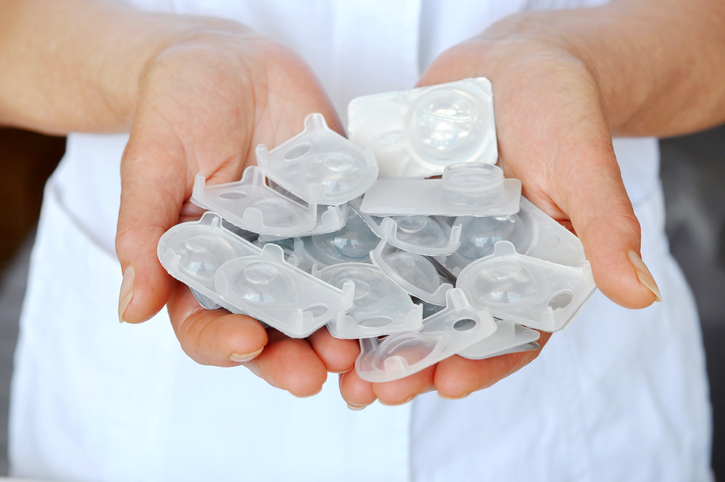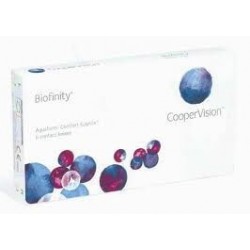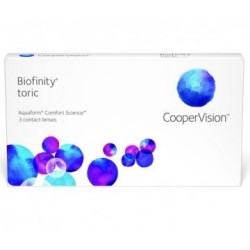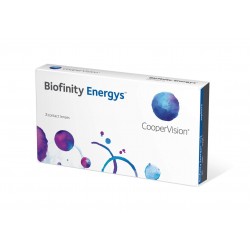What Are Contact Lens Made Of?

Contact lenses look so simple, but they can already change one’s life for the better. They can be more convenient and comfortable than eyeglasses.
It’s only normal to get curious about the composition of lenses: how is it possible that a small, thin piece of synthetic can improve your vision? Luckily for you, we’re going to explain all the necessary details about the most common materials used for lenses throughout history.
The history of contacts starts with hard lenses made of acrylic, plexiglass, or polymethyl methacrylate (PMMA). Because of the disadvantages of PMMA, hard lenses became softer and more breathable thanks to silicone. They’re now called rigid gas permeable (RGP) lenses.
Since more and more people are using contacts, the demand for softer lenses has increased. Soft contact lenses are either made of hydrogel or silicone hydrogel.
Learn more about PMMA, silicone, hydrogel, and silicone hydrogel as materials for contact lenses.
PMMA
According to a research study, there are six polymers that can be used for contacts: polyamide, polyester, polyvinylchloride (PVC), polystyrene, polycarbonate, and–of course–PMMA. However, PMMA is the best one among them, hence its popularity during the early years of contact lenses. As a plus, it’s environment-friendly and safe enough for your eyes because it can be recycled and doesn’t contain toxic chemicals or substances.
Since lens materials should be easy to produce in huge quantities, transparent, less dense, affordable, environment-friendly, and durable, the appearance and nature of PMMA are ideal for manufacturers. PMMA is a thermoplastic that’s so transparent that it looks like genuine glass. As expected from a polymer, it’s very firm which is effective for prolonging the lifespan of lenses despite heavy use. For higher durability, it can even be combined with PVC.
In modern days, however, PMMA isn’t recommended anymore. That’s because it doesn’t exactly promote a high level of oxygen transmission. It needs more silicone, leading to the invention of RGPs.
Silicone
Compared to PMMA, silicone is much more breathable. It allows higher oxygen permeability, resulting in a more comfortable feeling while you’re wearing contact lenses. RGP is the modern version of hard contacts, which is necessary since not all people need or prefer soft lenses.
Why are RGPs better for some people?
It turns out that a lot of soft contact lenses made of hydrogel can still trigger discomfort. In fact, the silicone compounds of RGP contacts allow more supply of oxygen to the cornea. No wonder more lenses nowadays use silicone hydrogel instead of plain hydrogel to completely satisfy users who need softer contacts.
Another reason why RGP can be a better option than other types of contact lenses is its size. Since its smaller, only a small part of your eye will be covered. This means it can make little movements as you blink, which is surprisingly a good thing to maintain moisture and oxygen through your tears.
More importantly, RGP is effective for more serious vision problems. It won’t change shape, which means a consistently smooth surface that will never distort your vision. That’s why it’s a popular choice for correcting astigmatism.
Additionally, RGPs can be used for at least one year. That means less money to be spent on maintenance. And, don’t worry about constant cleaning; the smooth surface is quite easy to clean.
If RGPs are so beneficial, why are they less popular than soft contact lenses? It may take some time for an average person to get used to the feel of rigid contacts. And, worse, RGPs should be used daily whether you like it or not just so you’ll get the hang of it.
Hydrogel
While hard contacts have changed from using PMMA to silicone, soft ones are known to be made of hydroxyethyl methacrylate (HEMA) or hydrogel before the existence of silicone hydrogel. HEMA is still a polymer, but it’s hydrated because it contains water.
Hydrogel and silicone contact lenses aren’t very different from one another. They’re both plastics, which explains why they’re stiff without water.
Just like hard lenses, hydrogel contacts can correct some vision problems. It can be used for correcting astigmatism, nearsightedness, farsightedness, and a few age-related eye conditions. Unlike PMMA and silicone contacts, though, hydrogel lenses are more comfortable for most people because of their flexibility. Flexible lenses tend to adapt better with your eyes’ movements.
Silicone Hydrogel
![]()
The most comfortable type of contact lenses in this generation is the silicone hydrogel. That material is the best one when it comes to oxygen permeability. Even though HEMA and silicone hydrogel are both soft contacts, the latter is much more comfortable. One might expect them to have slight differences, but that’s not the case since silicone hydrogel lenses are the advanced version of hydrogel contacts to counter all the disadvantages of HEMA.
Since extended-wear lenses require flawless oxygen transmission to prevent harming your eyes despite 24/7 use, a lot of them contain silicone hydrogel. The same idea goes for daily disposable contacts except for the 24/7 bit. Daily disposables can only be worn throughout the day and should be discarded before you go to sleep.
You can choose also:
Monthly disposable contact lenses
Contact lenses without prescription
Types of contact lenses

There are two main types of contact lenses: soft and hard, or rigid gas permeable (RGP). Most people choose to wear soft contact lenses because they’re more comfortable. However, there are certain advantages to RGP that might make them a better choice for you.
Rigid Gas Permeable Lenses (RGP)
Rigid Gas Permeable lens are made of a material called silicone, which is a type of plastic. They’re called “gas permeable” because they allow oxygen to pass through to your eyes.
The main advantage of rigid gas permeable lenses is that they’re more durable than soft lenses. They also provide better clarity of vision and are less likely to cause eye irritation.
The main downside of RGP lenses is that they can be more difficult to get used to than soft lenses. They’re also more likely to cause Dry Eye Syndrome, so it’s important to make sure you drink plenty of water and use artificial tears if necessary.
Soft Contact Lenses
Soft contact lens are made of a material called hydrogel, a type of plastic containing water. They’re called “hydrophilic” because they absorb water.
The main advantage of soft lenses is that they’re more comfortable than RGP lenses. They’re also easier to get used to, and they don’t require as much care.
The main downside of soft lenses is that they’re more likely to cause eye infections. They also need to be replaced more often than RGP lenses.
Hybrid contact lenses
Hybrid contact lenses are a combination of soft and RGP lenses. They have a hard center surrounded by a soft ring.
The advantage of hybrid lenses is that they provide the clarity of vision of RGP lenses with the comfort of soft lenses.
The downside of hybrid contact lenses is that they can be more difficult to get used to than either soft or RGP lenses. They’re also more expensive than both types of lenses.
Which type of lens is right for you?
 Contact Lens Care.Medical worker holding a blister with contact lenses.Eye Care And Vision Concept.[/caption]
Contact Lens Care.Medical worker holding a blister with contact lenses.Eye Care And Vision Concept.[/caption]
The type of contact lens that’s right for you depends on your individual needs and preferences. If you have a strong prescription, you might need to wear RGP lenses. and for Dry Eye Syndrome, you might need to wear soft lenses.
If you’re not sure which type of lens is right for you, talk to your eye doctor. They can help you find the best type of lens for your eyes.
Conclusion
Throughout history, the main materials used for contact lenses are PMMA, silicone, hydrogel (HEMA), and silicone hydrogel. Hard contacts may contain acrylic or silicone while soft lenses are either HEMA or silicone hydrogel. However, it should be pointed out that PMMA and HEMA are traditional materials. If you prefer something more advanced, definitely go for RGPs or silicone hydrogel lenses depending on your preference between hard and soft contacts. Both of them promote the benefits of silicone, a material that makes them softer and more breathable.
Where to Buy Silicone Hydrogel Contact Lenses
Here at Contact Lenses 4 Us, we have a wide range of silicone hydrogel contacts like CooperVision’s Biofinity. Expect to see products using advanced materials so you can keep up with the demands of the modern world. Buy contact lenses straight from your computer or mobile phone for we don’t require a prescription before purchase. We ship globally, so don’t hesitate to order from our store anytime, anywhere.

Biofinity contact lenses (6)
Order biofinity contact lenses without prescription veryfication Biofinity contact lenses by CooperVision offer an optimal bl...

Biofinity Toric 6 contact lenses
Biofinity toric contacts by CooperVision are soft, monthly disposable lenses made to correct astigmatism. With Aquaform® Tec...

Biofinity Energys 3 contact lenses
Today’s digital life demands contact lens designed specifically to cater the digital needs. And, this is exactly what Biofi...
Check also:






